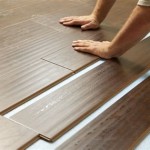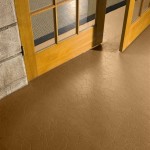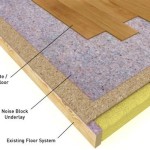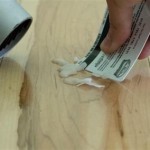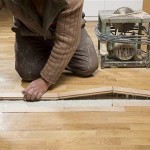Can Concrete Be Used to Level a Floor?
Leveling a floor is a common requirement in construction and renovation projects. Uneven floors can cause a multitude of problems, ranging from aesthetic blemishes to structural concerns. One frequently considered material for achieving a level surface is concrete. This article explores the suitability of concrete for floor leveling, detailing the situations where it is appropriate, the methods involved, and the potential drawbacks to consider.
The selection of the appropriate leveling material hinges largely on the extent of the floor's undulation. Minor imperfections – those measuring less than a quarter of an inch – are commonly addressed with self-leveling compounds, which are typically gypsum or cement-based. However, when dealing with larger deviations, concrete becomes a more viable option. Concrete's inherent strength and durability make it suitable for filling significant dips and raising low areas to meet the desired level.
The decision to use concrete for floor leveling should not be taken lightly. A thorough assessment of the existing floor is crucial. This involves identifying the cause of the unevenness, such as settling, structural issues, or substandard initial construction. Addressing the underlying cause is paramount; otherwise, the newly leveled floor may succumb to the same problems over time. Furthermore, the load-bearing capacity of the existing structure should be evaluated to ensure it can support the added weight of the concrete.
When is Concrete an Appropriate Choice?
Concrete is particularly well-suited for leveling floors in specific scenarios. These include situations where significant variations in height exist across the floor surface. If the floor dips or rises by more than an inch or two in certain areas, concrete offers a robust solution for building up the low spots. This is especially common in older buildings where the foundation may have shifted over time.
Another appropriate application is when dealing with floors that will be subjected to heavy loads or high traffic. Garages, workshops, and industrial spaces often require a durable, level surface that can withstand significant wear and tear. Concrete provides the necessary strength and stability in these environments, making it a preferred choice over lighter, more flexible leveling compounds.
Furthermore, concrete is often employed when the existing floor is significantly damaged or deteriorated. If the existing surface is crumbling, cracked, or otherwise compromised, applying a layer of concrete can provide a new, solid base upon which to build. This approach can effectively encapsulate the damaged material and create a durable, level surface for subsequent flooring installations.
Methods for Leveling a Floor with Concrete
Leveling a floor with concrete involves several key steps. The first, and arguably the most important, is preparation. The existing floor must be thoroughly cleaned and prepared to ensure proper adhesion of the concrete. This typically involves removing any loose debris, dirt, oil, or other contaminants. A concrete grinder may be used to roughen the surface, creating a better bond for the new concrete layer.
Following cleaning, a bonding agent or primer is typically applied to the existing floor. This helps to improve the adhesion between the old and new concrete, minimizing the risk of cracking or delamination. The type of bonding agent used will depend on the specific type of concrete being employed and the condition of the existing floor. It's crucial to follow the manufacturer's instructions for proper application.
Once the bonding agent has been applied, the concrete can be mixed and poured. Achieving the desired level requires careful attention to detail. A laser level or traditional leveling tools can be used to establish a consistent plane across the floor. Forms or screeds may be used to contain the concrete and guide the leveling process. The concrete should be poured and screeded in sections to ensure a uniform thickness and level surface.
After the concrete has been poured and screeded, it must be properly cured. Curing involves keeping the concrete moist for a specified period of time, typically several days to a week. This allows the concrete to hydrate properly and develop its full strength. Curing can be achieved by covering the concrete with plastic sheeting, applying a curing compound, or regularly misting the surface with water.
Potential Drawbacks and Considerations
Despite its advantages, using concrete to level a floor presents some potential drawbacks. One of the primary concerns is the added weight. Concrete is a heavy material, and adding a significant layer can place a substantial load on the existing structure. It's crucial to ensure that the foundation and supporting beams can handle the additional weight to prevent structural problems.
Another consideration is the thickness of the concrete layer. While concrete is effective for filling large dips and raising low areas, it can also raise the overall floor height. This can create issues with doorways, transitions to adjacent rooms, and the installation of fixtures such as toilets and appliances. Careful planning and consideration of these factors are essential before proceeding.
The drying and curing time for concrete can also be a significant factor, particularly in projects with tight deadlines. Concrete typically takes several days to dry and cure sufficiently to support foot traffic, and a longer period is required before installing flooring materials. This can disrupt the building process and potentially delay the completion of the project.
Furthermore, working with concrete can be a challenging and labor-intensive process. Mixing, pouring, and screeding concrete requires specialized tools and skills. While it is possible to undertake the project as a DIY endeavor, it is often advisable to hire a professional concrete contractor to ensure the job is done correctly and safely. Improperly installed concrete can lead to cracking, unevenness, and other problems that can be costly to repair.
Cost is another crucial factor. Concrete itself is a relatively inexpensive material. However, the cost of labor, equipment rental, and other associated expenses can add up quickly. Obtaining multiple quotes from qualified contractors and carefully evaluating the budget is recommended before committing to the project.
Finally, consider the finishing process. Once the concrete has cured, it may require additional finishing work to prepare it for flooring installation. This may involve grinding, polishing, or applying a sealant to create a smooth, even surface. The type of finishing required will depend on the type of flooring being installed and the desired aesthetic appearance.
In summary, concrete is a viable option for leveling floors, particularly when dealing with significant height variations, heavy loads, or damaged surfaces. However, it is essential to carefully assess the situation, consider the potential drawbacks, and ensure that the existing structure can support the added weight. Proper preparation, installation, and curing are critical to achieving a durable and level floor that meets the specific needs of the project.

Self Leveling Concrete Diy Tips Cost When Not To Use It

Is Self Leveling Concrete Good When And Not To Use

Self Leveling Concrete As A Finished Floor Ontario

Can Self Leveling Concrete Be Used As A Finished Floor

How To Level Your Floors

How To Level A Concrete Floor Base

How To Level A Concrete Floor

Floor Levelling All You Need To Know Arta

How To Level A Concrete Floor That Slopes

How To Level A Concrete Floor Part 1 Preparation
See Also
